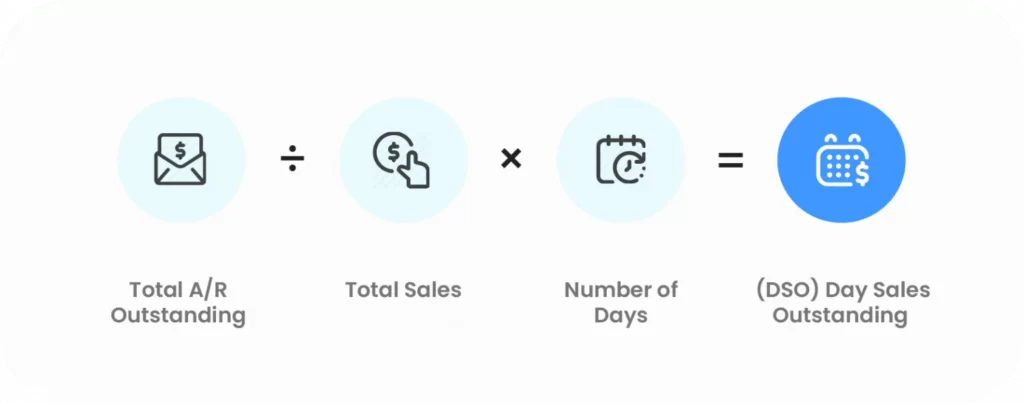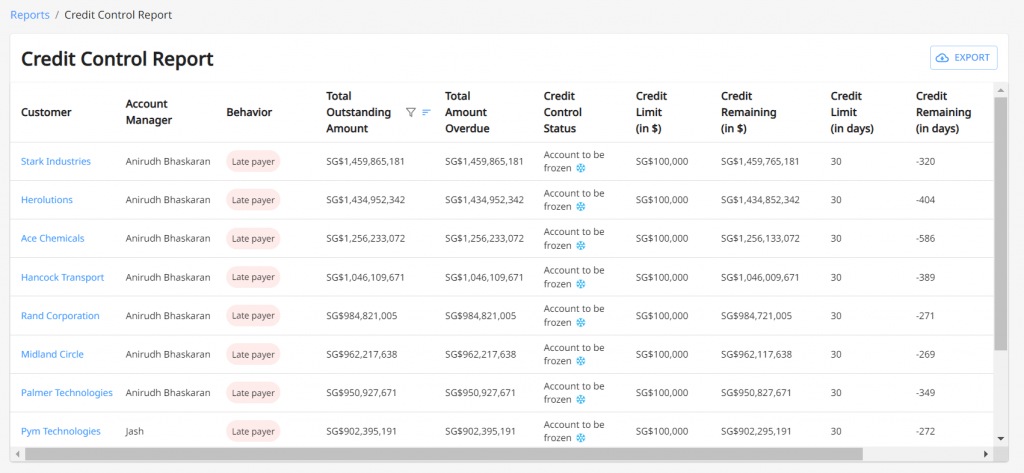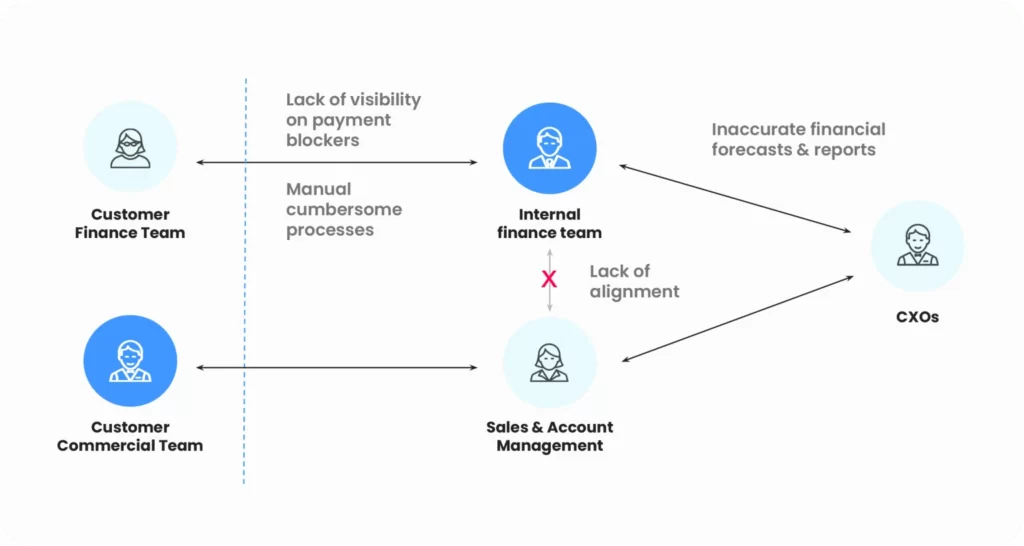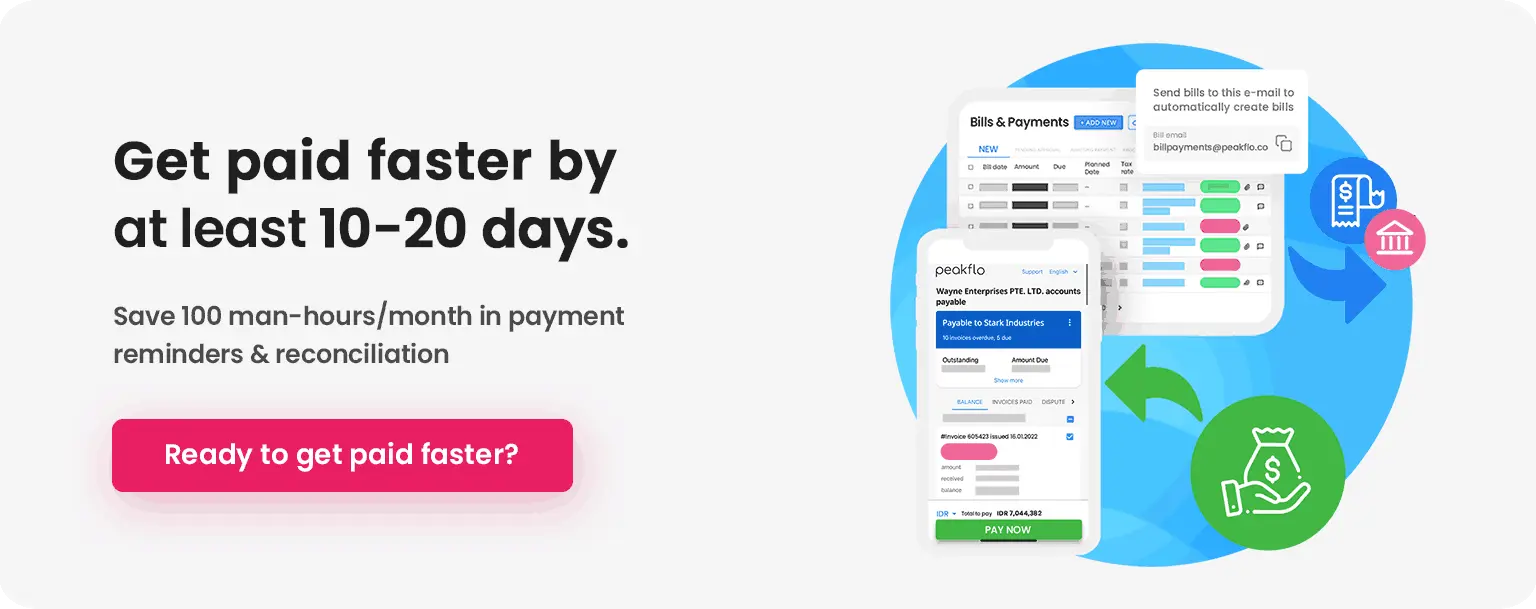Struggling with cash flow management in your business? Feel like you’re always just a step behind when it comes to bills and expenses?
The key to taking control of your financial situation could lie in a three-letter acronym: DSO or Days Sales Outstanding.
But, how do you assess its performance? And how can you use this to transform your cash flow struggles into successes? This ultimate guide to reducing Days Sales Outstanding is about to unlock those answers for you.
What is Days Sales Outstanding?
DSO is a measure of the average number of days it takes for a company to collect payment after a sale has been made to the customer. It is often used to assess the efficiency of a company’s accounts receivable management.
DSO also provides valuable insights into the following:
- Timeliness of customer payments
- Operational liquidity of the business
- Total sales volume within a specific timeframe
- Customer payment behaviors
- Efficiency of the accounts receivable teams
- Effectiveness of payment policies and strategies
What Do High DSO and Low DSO Mean?
High DSO
A high DSO suggests that it takes a relatively long time for a company to collect payments from its customers. This may indicate issues with the company’s credit and collection policies, potentially leading to cash flow problems. High DSO can result from customers taking longer to pay, lenient credit terms, or issues with the collections strategy.
Low DSO
A low DSO indicates that a company is efficient in collecting payments from its customers. This is generally seen as a positive sign of effective credit and collections management.
Potential Causes: A low DSO can result from two reasons:
- When the collections team has efficiently recovered the outstanding amounts from customers who paid on time.
- When credit and sales teams extend credit without thorough risk assessment, it may lead to an initially low DSO. However, over time, this approach can lead to bad debts.
So, the question becomes, how can you bring down your DSO effectively and boost your business’s financial health? First, let’s find out how to calculate your DSO.
How to Calculate DSO?
Divide the total accounts receivable for a particular period by the total credit sales for the same period, then multiply the result by the number of days in the period to determine DSO.
Most companies assess their DSO on a monthly, quarterly, or annual basis. To calculate your company’s DSO for a specific time frame, follow these steps:
- Determine the total value of accounts receivable for the chosen time frame.
- Calculate the total sales within the same time frame.
- Divide the total value of accounts receivables by the total sales to obtain the DSO ratio.
- Multiply the DSO ratio by the number of days in the chosen time frame to determine the average number of days it takes to collect payments from customers.

By using this simple formula, you can easily determine the average time it takes for your company to collect payments from customers.
| For example, let’s consider Company ABC. Last month, they had a total revenue of $120,000, of which $80,000 was from credit sales. At the end of the month, the company had $80,000 in accounts receivables. DSO = ($80,000 / $120,000) * 30 = 20 days This means that, on average, Company ABC takes 20 days from the sale date to collect payments from customers. |
Regular monitoring of DSO allows you to track performance over time and identify areas for improvement in your accounts receivable management. You can accurately calculate your company’s DSO and gain insights into your cash collection efficiency by utilizing our ready-to-use DSO Calculator.
Why Is DSO Calculated?
Days Sales Outstanding is a key indicator to monitor and analyze a company’s collections practices and their impact on cash flow. The lower the DSO number, the faster the company receives its cash, which is essential for fueling its operations.
Actively monitoring and managing your Days Sales Outstanding provides numerous benefits, including:
1. DSO Tracks Performance
By analyzing your DSO, you gain valuable insights into your company’s performance across various critical aspects. A low DSO is considered to be a positive signal which constitutes:
- A well-functioning collection process
- A proactive accounts receivable team
- An effective AR strategy
- High customer satisfaction
- Reduced risk of cash burnout
- Overall healthy cash flow
2. DSO Reveals Cash Flow Issues
If you observe a consistent rise in your firm’s DSO over time, it could serve as an early warning sign of an impending cash crunch.
Timely payment of bills is crucial to fulfilling obligations and covering expenses. A poor cash flow can jeopardize a company’s ability to meet these requirements. Monitoring your DSO allows you to proactively manage your cash flow performance.
3. DSO Resolves Problems Before They Escalate
If you have experience with accounts receivables, you understand the importance of converting receivables into cash promptly.
By closely monitoring your DSO, you can identify issues as they arise and take necessary actions to mitigate them. Resolving cash flow problems before they become significant is vital for the sustained success of your business.
4. DSO Measures Customer Satisfaction
Efficiently closing out credit transactions is a reflection of how satisfied your customers are with your products or services.
A low DSO can indicate a higher level of customer satisfaction. When customers are pleased with the value you provide, they are more likely to make timely payments.
By implementing effective strategies to maintain a low DSO, you not only optimize your cash flow but also foster positive relationships with customers.
How Do You Reduce DSO?
Improving your company’s DSO not only involves your credit and collection or accounting departments. It’s going to be a company-wide effort. Generally, a DSO below 45 is considered to be suitable for most companies. However, this benchmark may vary between different industries.
We’ll walk you through how you can reduce your Days Sales Outstanding so you’ll always have enough cash to fuel your business.

1. Streamline Invoicing Processes
Efficient invoicing is the cornerstone of effective accounts receivable management. Flawed invoicing processes can lead to delays and errors, impacting the speed of payment collection. To streamline invoicing:
- Ensure all invoices contain accurate and complete information, making it easy for customers to understand and process payments.
- Implement a streamlined invoicing system that minimizes errors and eliminates unnecessary delays.
- Optimize delivery methods to ensure invoices reach customers promptly, whether through traditional mail or electronic means.
2. Evaluate and Set Credit Policies
Establishing clear credit policies is essential for managing customer risk and balancing sales with timely payments. Evaluate and set credit policies that strike a balance between encouraging sales and minimizing payment delays:
- Define ideal criteria for acceptable customer risk, enabling businesses to identify potential problematic payers.
- Apply these criteria to new and existing customers, ensuring credit terms align with their payment capabilities.
- Enforce credit policies consistently and consider implementing consequences for non-compliance.

3. Simplify Payments
Make it as easy as possible for customers to pay you promptly. Offer multiple payment options, such as credit card payments or online payment portals, to provide convenience and flexibility.
Clear communication regarding payment methods and due dates helps customers understand their obligations and reduces confusion that can lead to delays.

4. Improve Accounts Receivable Management
Efficient management of accounts receivable is vital for reducing DSO. Implement the following strategies to optimize the process:
- Develop a robust follow-up plan for late payments, ensuring regular communication with customers to address any issues or disputes promptly.
- Encourage customers to communicate their challenges and explore special payment arrangements if necessary.
- Automate accounts receivable processes, such as reminders and statements, to save time and reduce errors.
- Consider integrating accounts receivable software that provides workflow automation, integrated payments, and customer portals, enabling streamlined management and improved efficiency.

5. Provide Incentives
Offering incentives for early payment can motivate customers to pay sooner and reduce DSO.
Consider options such as early payment discounts or exclusive offers for repeat customers. These incentives not only encourage prompt payments but also strengthen customer relationships and loyalty.
What are the Other Metrics to Analyze Along with the DSO?
While DSO calculations help optimize A/R, they still leave room for assumptions. That’s why it’s best to consider other factors for a clear picture. Besides, these factors help the senior management detect error-prone areas and formulate an action plan to eliminate them.

1. Collections Effectiveness Index (CEI)
As the name suggests, CEI measures how effective the collections team and their procedures are. Acknowledged as one of the best metrics to consider along with DSO, you can interpret the order-to-cash teams’ performance.
2. Bad Debt to Sales
Bad debt occurs when customers can’t pay their dues, and this metric shows how much is written off. This is measured in ratio, and if it increases with time, it suggests weak credit policies and management.
3. Days Deduction Outstanding
DDO or Days Deduction Outstanding is a metric calculated to clarify how a business deals with its deductions. DDO is calculated by dividing the outstanding deductions by the average deductions in a certain period. The period could be three, six, or 12 months.
4. Accounts Receivable Turnover Ratio
A crucial metric to gauge how a business manages and collects its assets. We recommend aiming for a high AR turnover ratio as it indicates process efficiency.
5. Best Possible Days Sales Outstanding
This metric defines the best possible number of days it takes for a business to collect its receivables. It’s theoretically calculated for an internal comparison between the DSO and BPDSO. Based on this, the senior management establishes the best method for benchmarking AR.
Use the Right Tool For Your Collection Process
Reducing DSO becomes nearly impossible when relying on repetitive manual processes. To optimize your collections and improve cash flow, every component of your business should have efficient processes in place, and your collections are no exception.

In addition to providing proper training, it is crucial to equip your teams with the right tools to enhance their collection performance. Investing in best-in-class accounts receivable software can revolutionize your collection processes, spanning from invoices to cash receipts.
An exceptional accounts receivable software platform offers a wide range of tools, including workflow automation, integrated payments, and customer portals. By leveraging these features, you can enjoy enhanced convenience and flexibility for both your team and customers.
The implementation of outstanding accounts receivable software not only aids in reducing DSO but also saves you valuable time, money, and resources. With increased automation and smarter processes, you can work more efficiently and effectively.
Streamline Your Accounts Receivable Processes
By implementing the strategies outlined in this ultimate guide, businesses can optimize their accounts receivable processes, improve cash collection efficiency, and maintain a healthy cash flow.
Peakflo allows you to streamline all of your accounts and collection processes under one high-performing digital platform. We offer features that help you increase your A/R team’s productivity and make it easier for customers to pay you on time.
Big or small, we’ll provide you with a complete picture of your company’s finance.
Connect your accounting software with Peakflo today and start automating your accounts receivables!
FAQ
What is the formula for DSO?
Days Sales Outstanding is calculated by taking the total Accounts Receivable and dividing it by the Net Credit Sales. The result is then multiplied by the number of days in the specific period for which you want to measure DSO. Days Sales Outstanding = (Accounts Receivable/Net Credit Sales)x Number of days.
What is a good days sales outstanding ratio?
A good days sales outstanding ratio indicates that a company efficiently collects payments from customers within a short timeframe, so the lower the figure, the better. Typically around 45 days or less is considered to be ideal.
Can DSO be negative?
In practice, DSO is not negative. It represents a positive number that indicates the average number of days it takes for a company to receive payment from its customers. A negative DSO wouldn’t align with the concept of measuring the time it takes to collect payments.










![Why AI Sales Calls Are Making Good Sales Reps Even Better [2025 Guide] ai sales calls](https://blog.peakflo.co/wp-content/uploads/2025/09/65168cf6-3001-4733-8cbc-12d5684cf449-218x150.webp)







































